Farm Business Survey 2018-2019: profitability of Scottish farming
An analysis of Scottish Farm Business Survey 2018 to 2019 data, focussing on profit from farming in the supported sectors of agriculture, profit from alternative sources, support payments, and long term profitability of Scottish farm businesses.
This document is part of a collection
3. Other aspects of farm profitability
3.1 Diversification
Diversification uses farm resources to provide additional income through non-agricultural activities. It can consist of a variety of activities including tourism, retail and renewable energies.
Farm diversification has been becoming increasingly important to overall farm income.
In 2018-19, 55% of farms were engaged in diversified activities. The most common diversified activity was renting out farm buildings.
The average income from diversification across all farms was around £4,600 in 2018-19. However, not all farms engage in diversified activities. Farms that have been in the FBS sample over the last five years, who do engage in diversification, generated around 16% of their farm business income through these activities. Their average income from diversification was around £8,500.
The average across all farms has been used here to investigate how diversification varies across the farm profitability deciles used across this report. In 2018-19, 46% of farms increased their income through diversification. As shown in Figure 17 there is wide variation in income from diversification and this does not correlate with profit from farming.
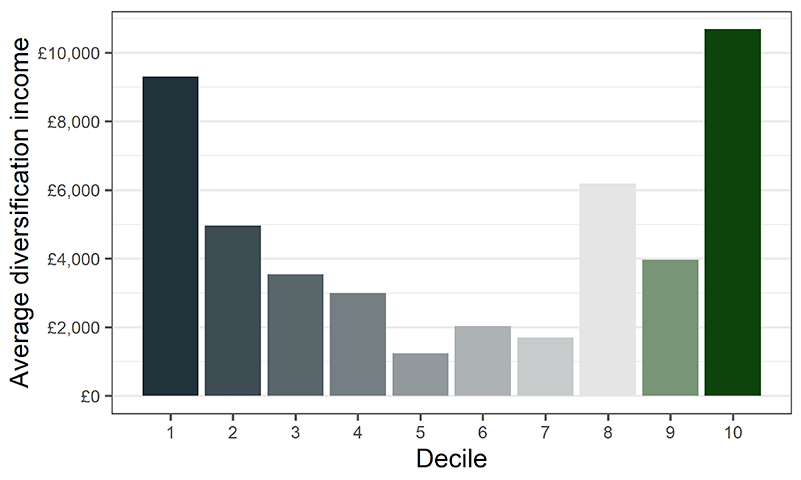
3.2 Assets and liabilities
Lower performing farms have a higher average ratio of liabilities to assets, as shown in Figure 18. Similar to farms receiving support payments, the top six deciles show fairly similar average ratios.
The least profitable decile had a much higher average ratio of liabilities to assets in 2018-19 compared to all other deciles, with a ratio of around 20%. In England, the average farm has a ratio of 11%[16], compared to the Scottish average of 12%.
Figure 19 shows the liabilities to asset ratio over time. The liabilities to asset ratio was highest in 2016, but has been decreasing due to increasing average assets.
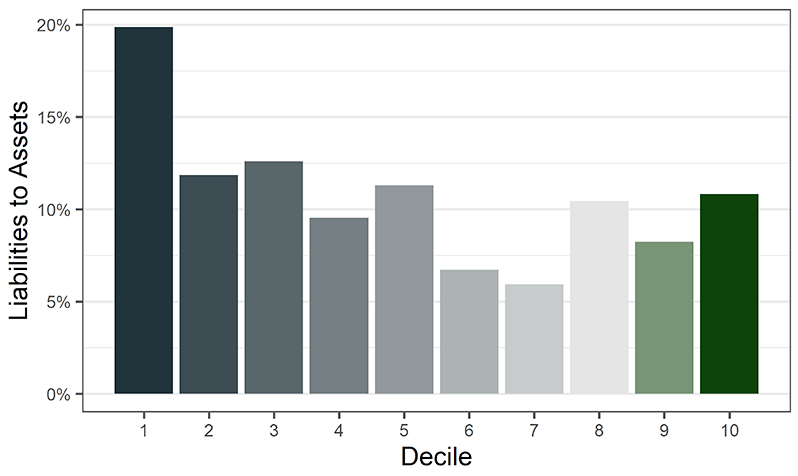
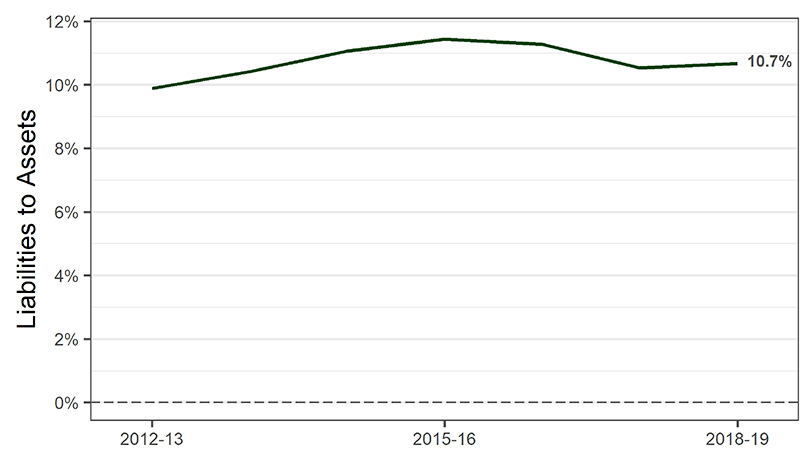
3.3 Farm profitability over time
Around 400 farm businesses appear in the FBS across all years of the period 2012-13 to 2018-19, allowing identification of longer term trends. Farms may drop out of the survey for many reasons, including going out of business, lack of time to take part, or just lack of interest. There does not appear to be a strong link between dropping out and profitability.
Figure 20 shows that the proportion of profitable farm businesses in the continuous FBS sample between 2012-13 and 2018-19 has been relatively stable. Due to bad weather in 2016, there was a decrease in the number of profitable farms. However, in most years, less than a quarter of the 400 farms were profitable without support. Average assets, liabilities and diversification income have all increased over recent years.
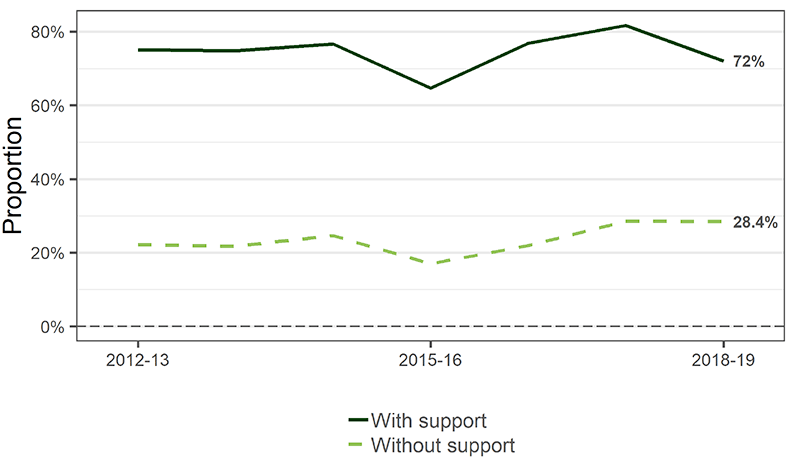
As shown in Figure 21, around 30% of farms in the continuous sample were profitable every year in the last five years when support payments are included. A small number of farms (2.5%) had no profitable years over the last five years.
Reliance on support payments is evident from this analysis as around 30% of farms would never have had a profitable year over this period without support payments. It is possible that these farms are earning income from alternative sources such as diversification or off-farm jobs, or have significant assets to support their business.
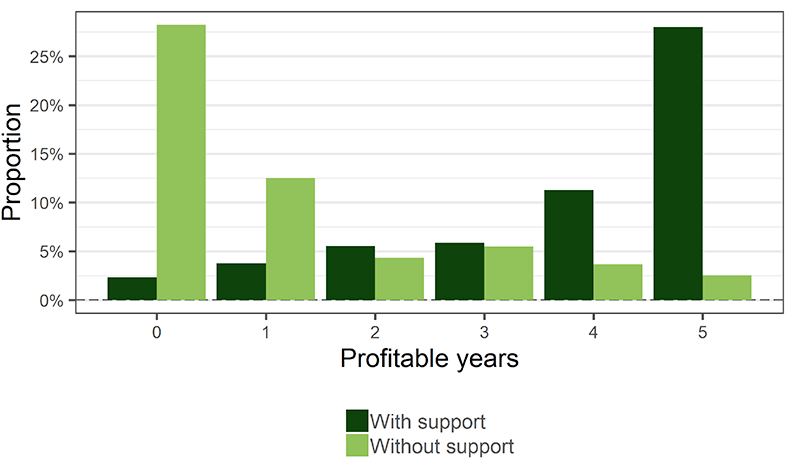
3.4 Labour productivity
It is difficult to find estimates of labour productivity specific to Scottish farming. Agriculture is often grouped with other industries, for example Forestry and Fishing, or "Non-Manufacturing Production".
In 2018, the average output per hour of labour across the Scottish economy was £35.04, an increase of 38% since 2007. The Non-Manufacturing Production industry group, which includes agriculture, had output per hour of £47.75, an increase of 4% since 2007. The publication notes that this figure may be misleading, because many of these industries are particularly capital intensive.[17]
According to ONS figures, ABDE[18] labour productivity in Scotland is around 85% of that in the UK as a whole. In 2017, ABDE output per hour was £50.82 in the UK, as opposed to £43.71 in Scotland.[19]
Contact
Email: Harriet.Houlsby@gov.scot
There is a problem
Thanks for your feedback